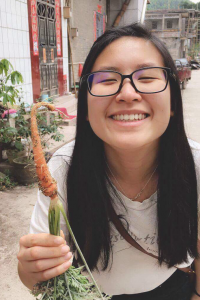So now it’s the end of November and we have worked together for almost three months. The whole experience has been significant to us in many ways so we are sharing both from the perspective of teamwork and learning about ourselves (Overall group experience) as well as the ups and downs of the course/project itself (Overall project experience )
Overall Group Experience
“ We don’t know who we are until we see what we can do.” Martha Grimes
WHAT were the challenges?
Time flies and this semester is almost at an end. As a group and as individuals, we encountered many new experiences and challenges.
Uncertainty:
On that first day, as we looked forward to meeting our group members, everyone felt uncertain. We had very little time then to learn much about each other before we had to assign roles and move forward with tasks.
Workload and Stress:
This course entailed a heavy workload. At some points, especially during midterms, most of us felt stress as we studied for and sat exams, while trying to keep our project on schedule.
Skills and Strengths:
We each came to the group with beliefs about our own skills and our own shortcomings; our past group experiences; and our expectations for each other and for the team. We all wanted to participate in creating the best experience possible but it wasn’t clear at first how that would look, if our skills would be important or valued, if others had the knowledge and experience in areas we lacked and if we could fit it all together to be a cohesive team where everyone’s contribution was respected and appreciated.
Communication:
There was uncertainty and doubt about when to speak out or step up and when to hold back or allow others to shine. Some of us were naturally more talkative and inclined to take the lead while others were quieter, weighing up the right time to contribute or volunteer for a task.
SO WHAT? How did we overcome the challenges?
After our first tutorial, we began to feel comfortable within the group and keen to step into this exciting project and by the end of the semester, we agreed that we had a great time working together.
Uncertainty: Encouraging each other
Being forced out of our comfort zones had unexpected benefits. It made us work harder, think of different ways to approach tasks and challenge ourselves. We didn’t know enough about each other to assume anything or simply let someone else do it. After all, nothing might get done. So, we reached out with the knowledge and experience we had and encouraged others. When phoning community partners was a daunting task for some, other group members teamed up to help or share the task. When interviewees were not available at the times we had expected, we stepped in for someone else, we changed our schedules, we went in pairs. Every time someone was uncertain, confused or stuck, someone would always reach out to try to help that person out. When the whole team faced uncertainty, as we did with the infographic, or an unexpected outcome, as we did with the feedback interviews, everyone shared in the responsibility, the humour and ultimately, the learning that ensued.
Workload and Stress: Divide and Conquer
By the time midterms were upon us, we had developed a rapport and were able to more easily take on and complete tasks. We survived blogs 2 and 3 and drafting the project proposal by using strategies such as assigning each part of the whole task to one individual and brainstorming the outline for each part in all upcoming tasks every time we met in person. That way, we divided the work so it was more manageable and we left the meeting with a clear idea of how our part would fit within the whole. We made certain that every person played a role in every task, whether it was writing, designing, interviewing, emailing, filling our excel spreadsheets. That way, all of our ideas were considered and everyone benefitted from the group’s co-operation.
Skills and Strengths: Learning to step up and learning when to let go
It turned our that our team was composed of people proficient in writing, communicating, designing, keeping the project on task, note taking, technology or adapting to any role that was needed. Everyone attended every meeting and own our comfort levels in certain skills became clear. At first, we didn’t necessarily volunteer for what we thought we could do but gradually, we became more confident and offered to take on certain roles. At the same time, we became comfortable about letting go of control and trusting in each other to complete each part of the task. It became clear to all of us that everyone’s contribution was valuable and essential for the best outcome.
Communication: Styles are different
From the beginning, we all understood the importance of communication in a group project but throughout the weeks, we had to discuss and clarify more issues small and large than we could have imagined. Facebook messenger was a lifeline to get messages back and forth, links to documents, ideas, pictures, ask and answer questions. In person communication was extremely important too and every chance we got, we sat down as a group and went through what was done and what was upcoming. Even with many text messages and emails, some things are better discussed in person and those sessions helped us to solidify our approach and make sure we all understood each other that we were all on the same page. We saw the importance of as much communication as possible in different ways to ensure everyone’s needs were met.
NOW WHAT?
Three months have passed and we are finally coming to the end of term and it’s time for us to show what our group achieved to the public and write up our final report. As we present our infographic next week, we will be showing the Richmond Food Asset Map but also the collaboration and teamwork that was involved. LFS 350 threw us in at the deep end with a heavy workload and many, diverse tasks but the confidence that we have gained in our own skills and strengths and well as our ability to work effectively within a team will serve us well in the future wherever our careers ake us. Although the term ends soon, what we’ve gained throughout the whole course will be with us for a long time, even forever.
Overall project experience
“In any project, the most important factor is the belief in success” William James
WHAT were the challenges?
Uncertainty:
At the beginning phase of joining VCH on Richmond Food Asset Map (RFAM), all of us including the assigned community partners, were new to this project. We were the first group of UBC students launching this project into Richmond whereas, in Vancouver, the process had started several years ago. During the first meeting, the atmosphere was a little tense. No one was sure what we were expected to accomplish, exactly what our goal was and how to set up the map where there was none. At this phase until the next phase, we just moved one step at the time since the future project was still a blur to us.
Deadlines and Stress:
The most challenging part during the process was getting the email replies and the setting the interview with other community partners before the deadline caught up with us. During phase one, we had to contact all existing food assets within our categories in the Richmond community. Emailing was not difficult since we had a template to follow; however, the waiting period for the replies with the knowledge that the deadline was approaching was stressful. Issues arose that we hadn’t anticipated. The email template was lengthy and wordy and not sufficiently clear for representatives of the food assets to understand that we needed current information and their permission to appear on the map. Our time was tight and we had to balance politeness and patience with further attempts at contacting people with further emails or phone calls.
Communication and Scheduling:
More obstacles came up at phase two, when we had to set up times for the interviews with selected community partners. The interview phase allowed us three weeks period including emailing and interviewing. Some of the community partners only replied to their emails during office hours and some worked part-time. Their limited availability often conflicted with our class times.
SO WHAT? How did we overcome the challenges?
Uncertainty: Don’t expect to (ever) know all the answers.
We began to learn to accept uncertainty and live with it. Instead of leaving individual group members work out their own assigned tasks, we often brainstormed ideas as a group to minimize any confusion. Moreover, as the project moved forward, we learned how to effectively communicate with our community partners when our group encountered issues that required their clarification. We realized that they were new to this process too and bumps in the road would arise for us all. We made plans but when things took an unexpected turn, we learned that we could adapt our own strategy or at the very least, gain some knowledge and experience that could be passed on to the next group. For example, contacting community members to get information, approval or set up meetings almost always took much longer than we had anticipated so allowing enough time for this part is important. We had to learn and accept that some organizations did not want to take part in the project nor appear on the map and not everyone embraced the project as we did.
Deadlines and Stress: Encourage, adapt and think out of the box
As deadlines approached, we encouraged and helped each other but sometimes, we simply couldn’t deliver on time. We could not complete the interviews in the two weeks we had anticipated and we requested an extra few days from VCH to deliver a comprehensive feedback summary. They were willing to allow us the extra time and our report was completed.
We also learned to step up and provide our community partners with alternative solutions that we thought of to solve the problems that both our group and our community partners have never encountered before. For instance, in the second phase of our project, our community partners expected us to conduct in-person or phone interviews with other organization directors for feedback on the RFAM. However, due to time constraint and conflicts with our school schedules and despite repeated attempts, we had trouble setting up meetings with some directors. Rather than giving up getting feedback from those organizations, we suggested to our community partners obtaining feedback by phone or by email and ultimately, we received one very detailed response to our feedback questions via email. We had to adapt to circumstances but were tenacious and did not give up.
Communication and Scheduling: Sometimes it’s worth the trouble
Although we were facing all these challenges when we were working on the project, our group did an amazing job in communicating and expressing our feelings about the project with each other. Although arranging the interviews was troublesome with difficulties in communications and scheduling we managed meet with most organizations and conduct a quality interview with them. Because of the face to face meeting, we obtained a lot of valuable comments about the map and insights about the community. We were pleasantly surprised about the depth of knowledge, the enthusiasm for the Richmond Food Asset Map and the thoughtful feedback we received. Having been initially disappointed that we could not give out surveys to a larger number of people, we saw the value in qualitative feedback that we received.
NOW WHAT?
We will be holding a booth in UBC next week to deliver our presentation to the people passing by, with our infographic exhibited. There will be one or two people in the group talk, but all of the group members will be there to attract people, answer questions and show support to the speakers. After the presentation, there will be only one assignment left for us to do as a group in LFS 350, which is the final project report. With the experience of collaborating for 3 months, we believe we can wrap this up in style.
We accomplished a lot by starting this project in Richmond and getting the community members engaged and excited about the idea of a food asset map for their community. The people that we interviewed represented many organizations with diverse groups of clients and we are now aware of how much knowledge is out there, far from academia. Richmond has many resources and assets and a variety of rich cultural backgrounds. Moving forward, we must ensure that all segments of the community are invited to be heard. There are many layers in the community and in our short time there, we only felt we touched the surface. Knowledge, food and social networks and experience reside with the members of the community itself and our advice to the next team here would be to talk to people as soon as they can to learn from them how to help the community with issues such as food security. As a team, we have learned skills that will help us in the real world from the VCH dietitians, community members of Richmond and from each other. Moving on is bittersweet but we are confident that we will leave the project in good hands.
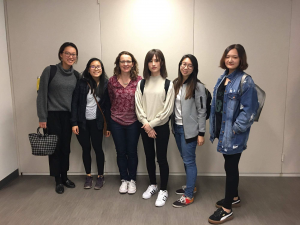
“Overall, our team spirit has provided us incredible strength and motivation in completing this project” (quote from a member of our group)
References
James, W. (1956). The will to believe: and other essays in popular philosophy. New York: Dover Publications.
Martha Grimes > Quotes. (n.d.). Retrieved November 26, 2017, from https://www.goodreads.com/author/quotes/14150.Martha_Grimes


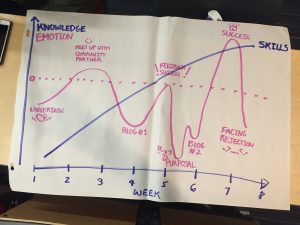
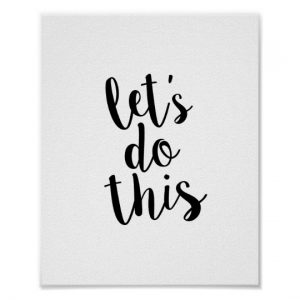
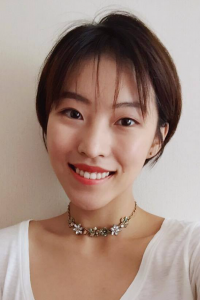


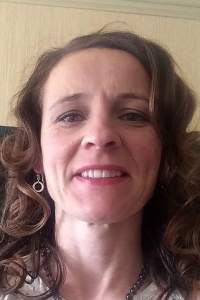 Jacqueline Clark
Jacqueline Clark
